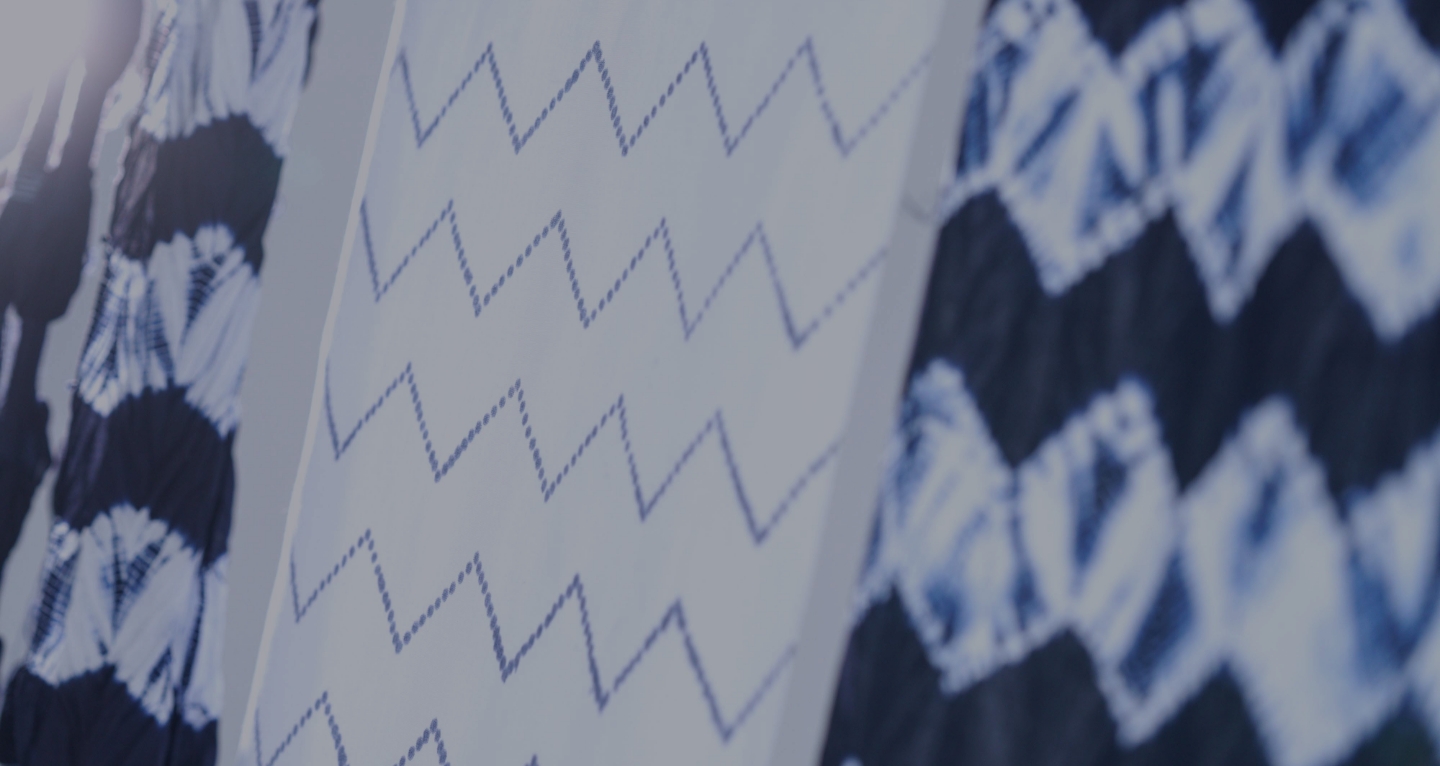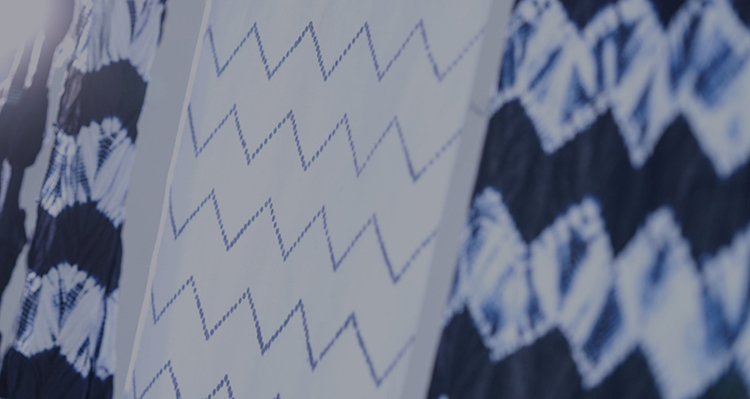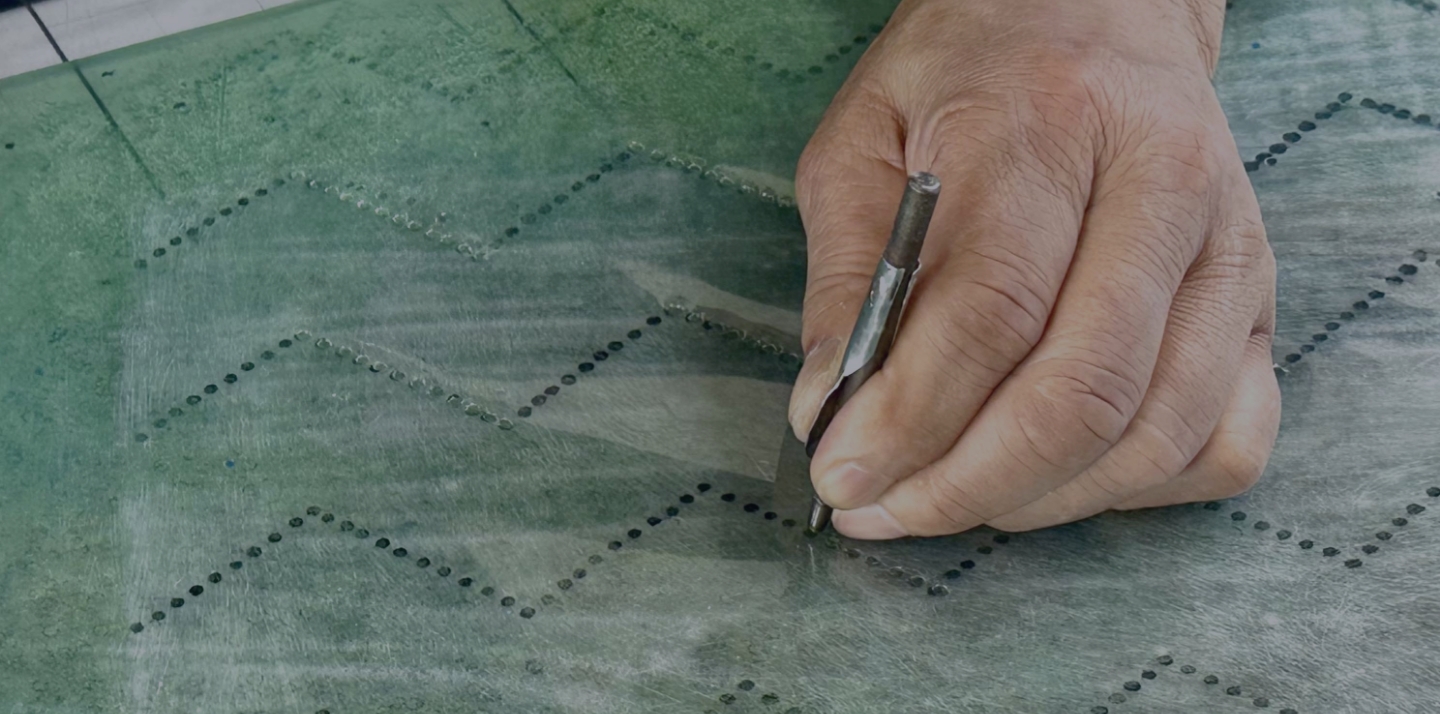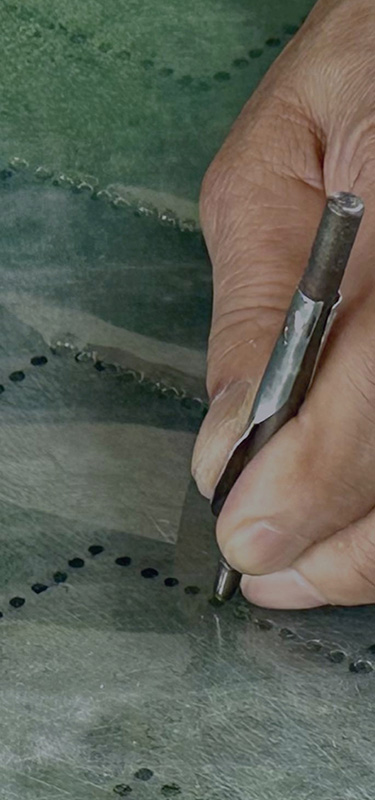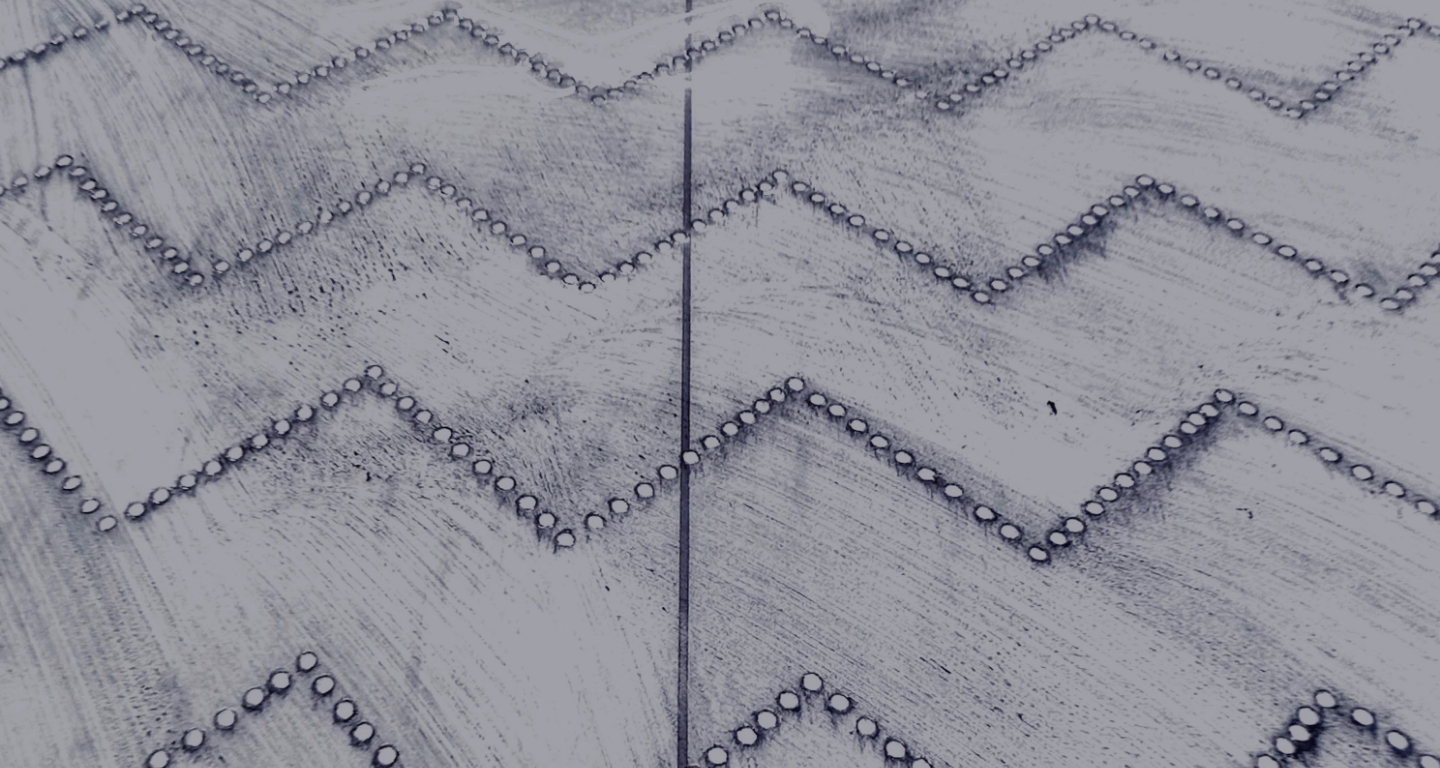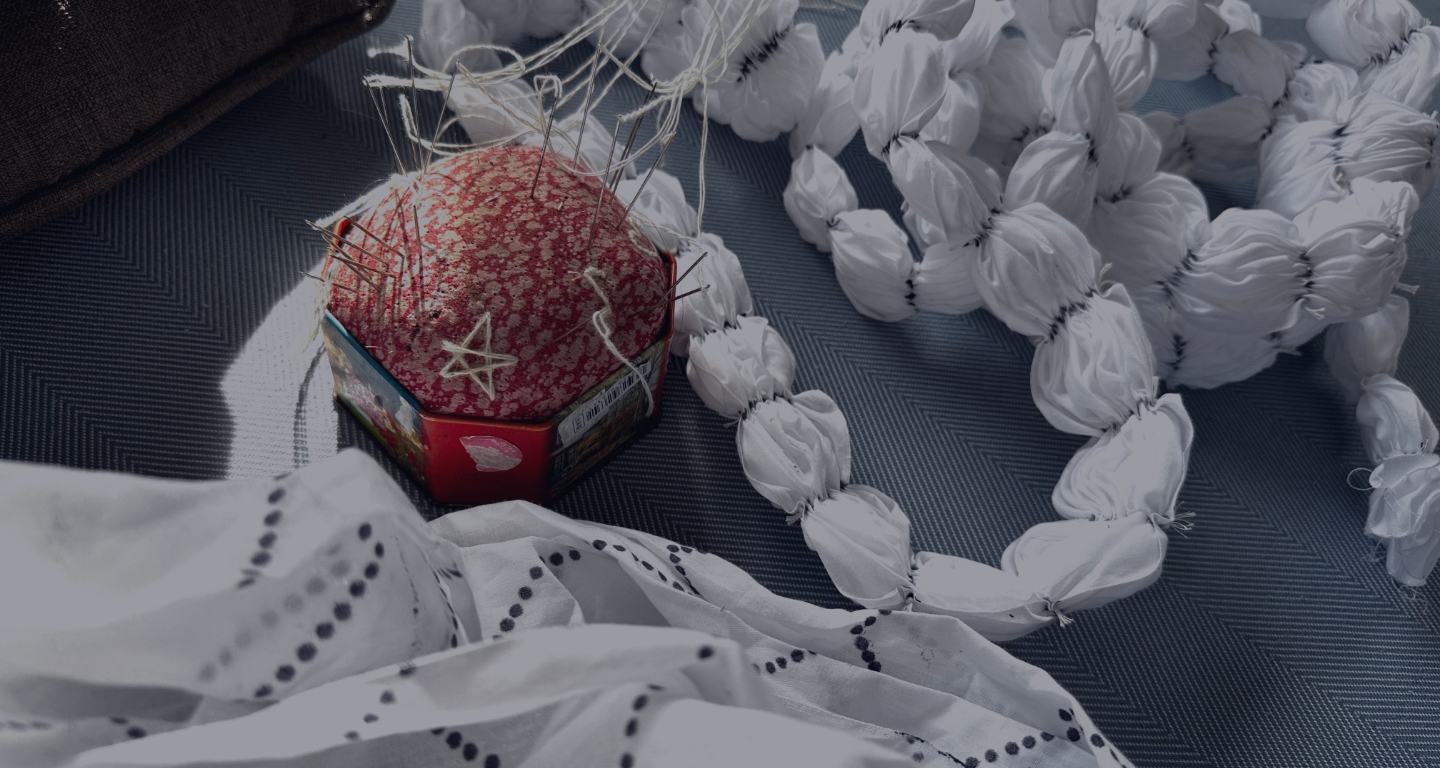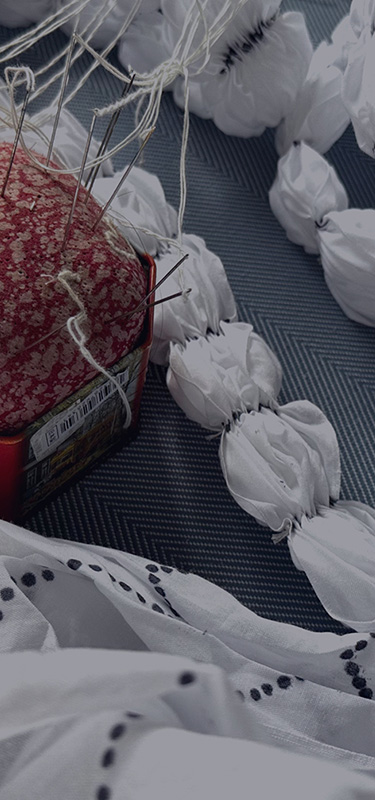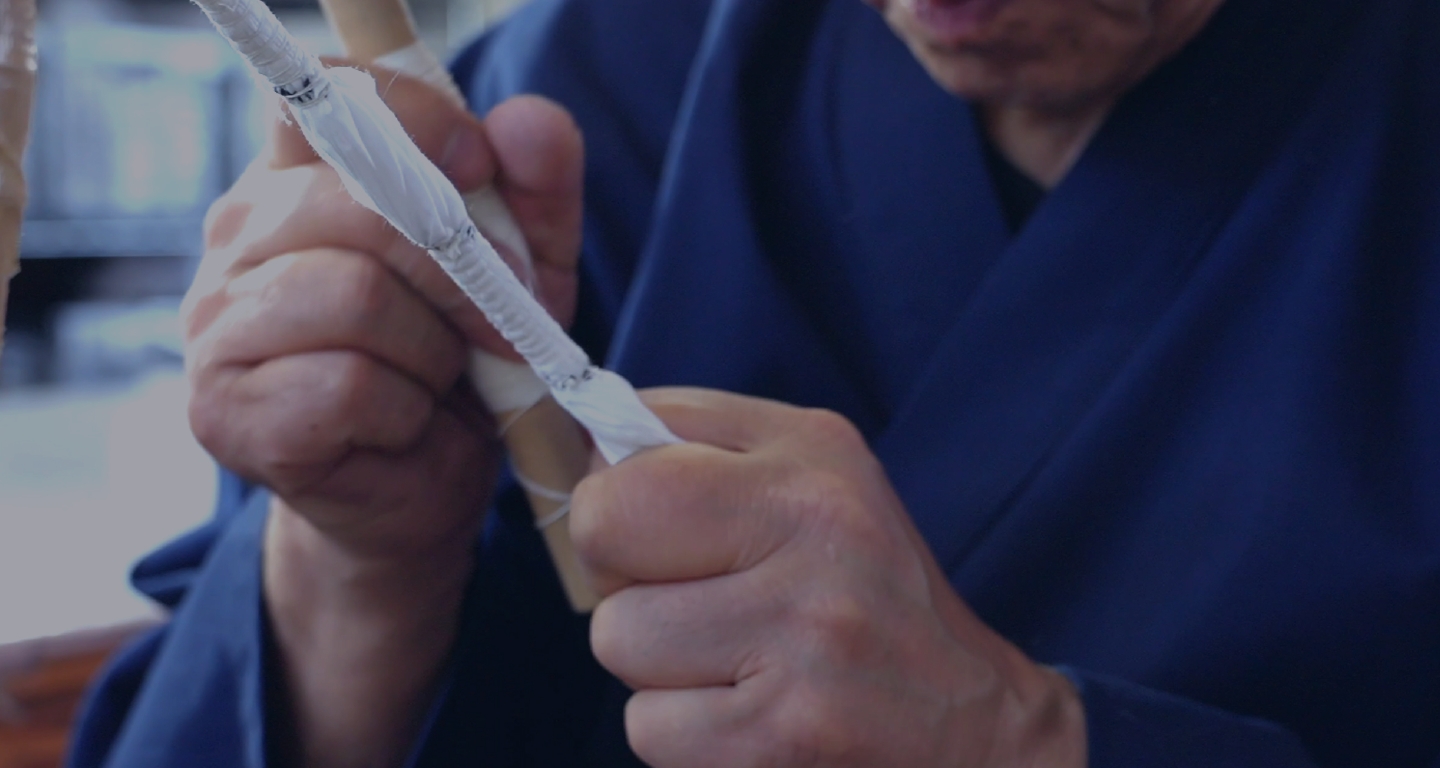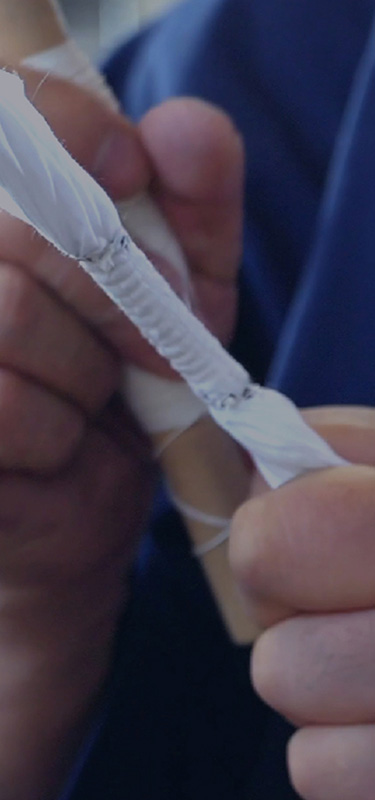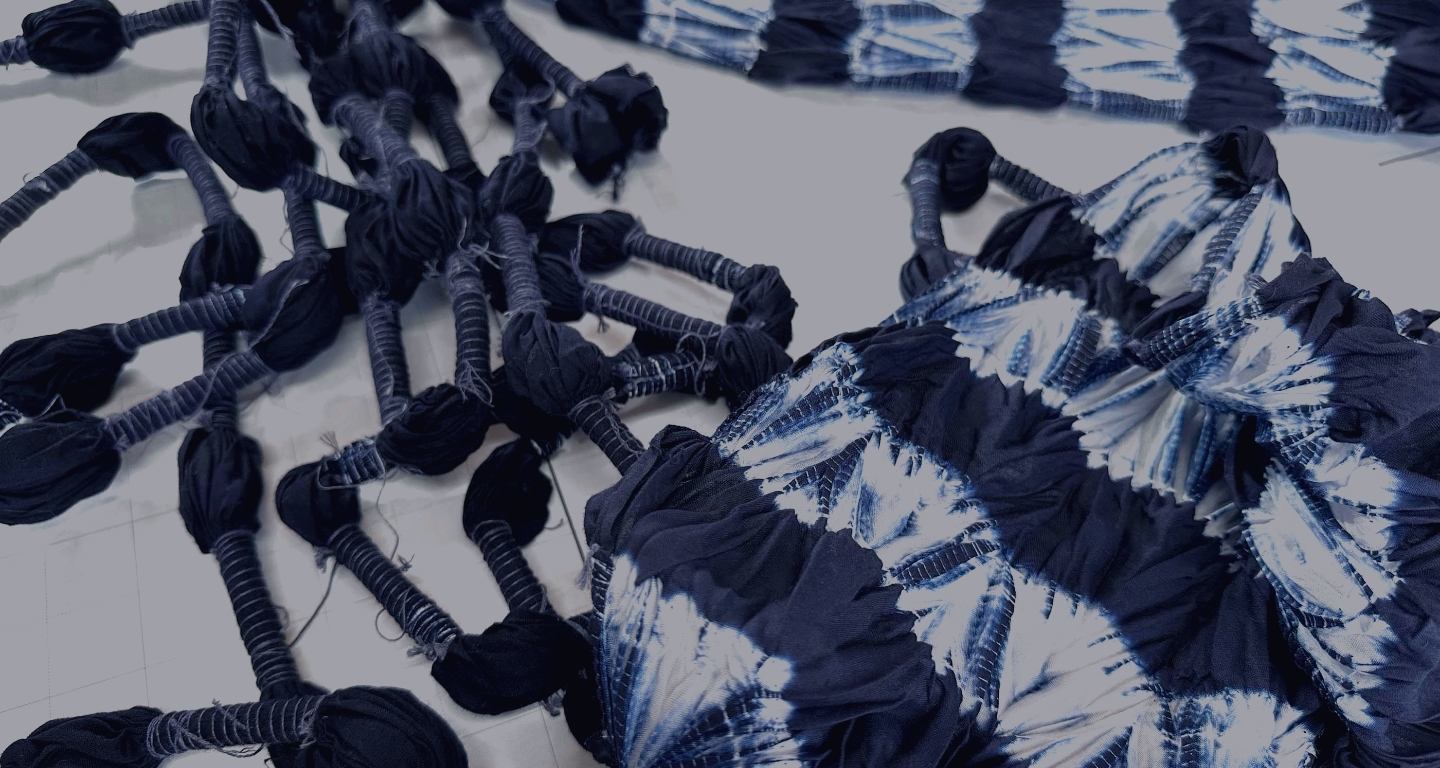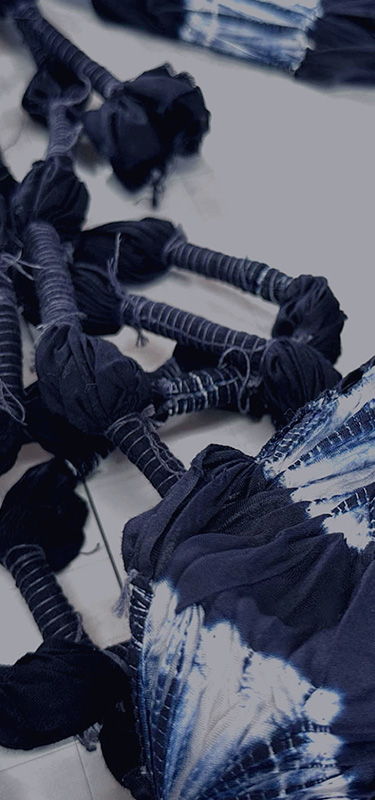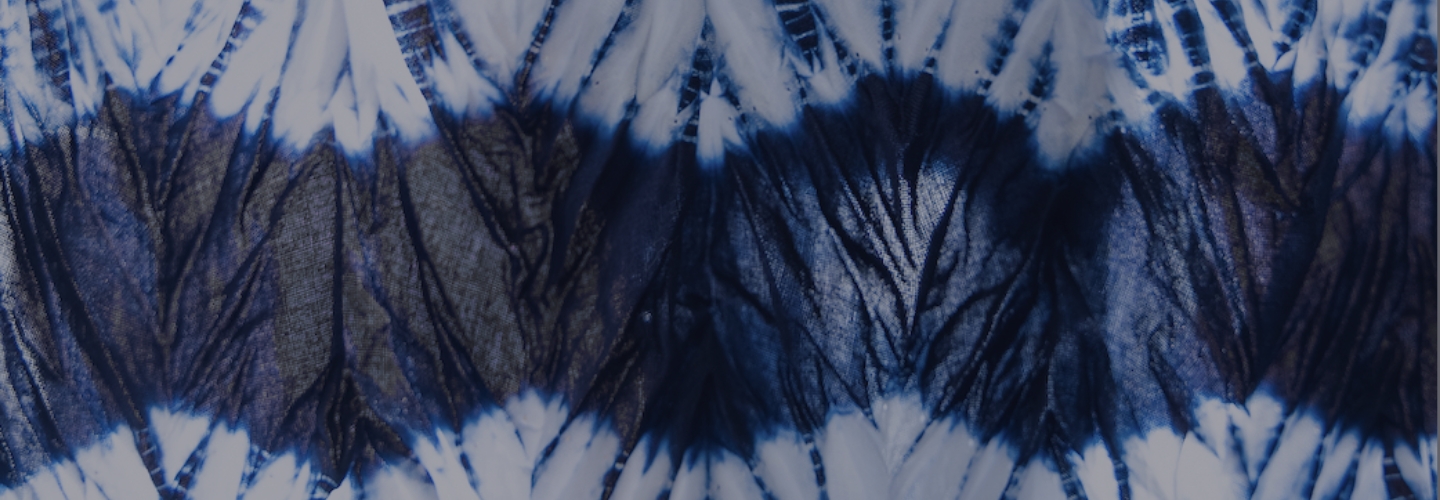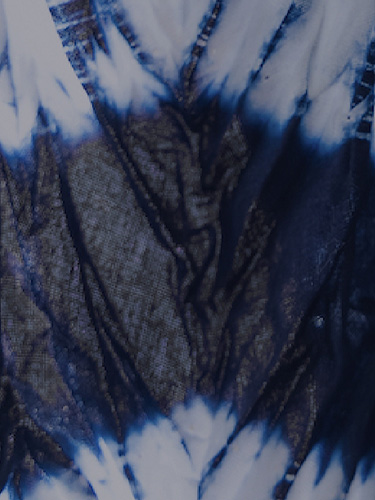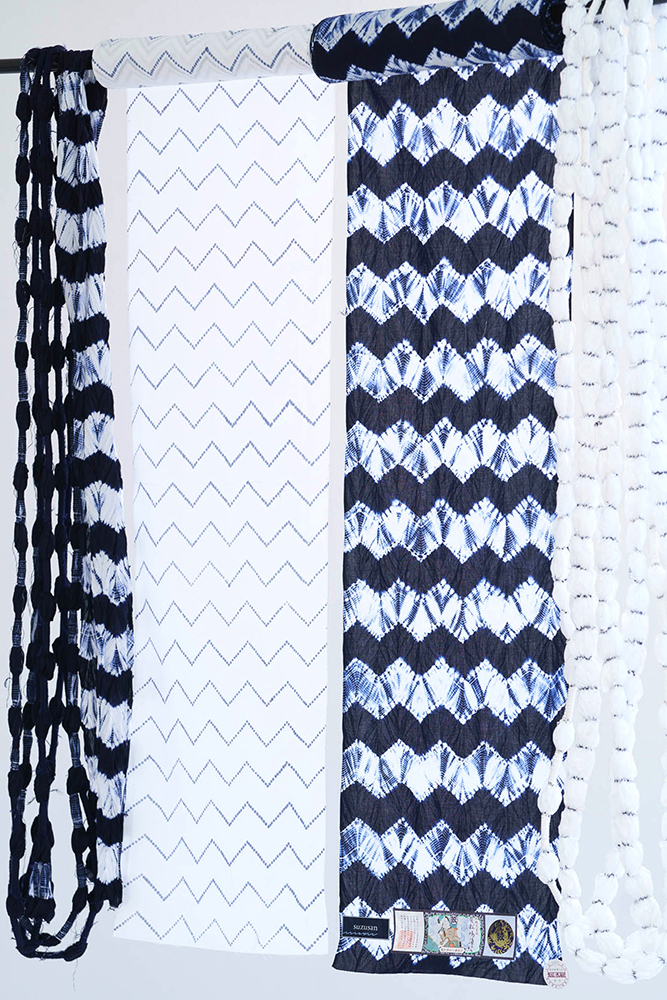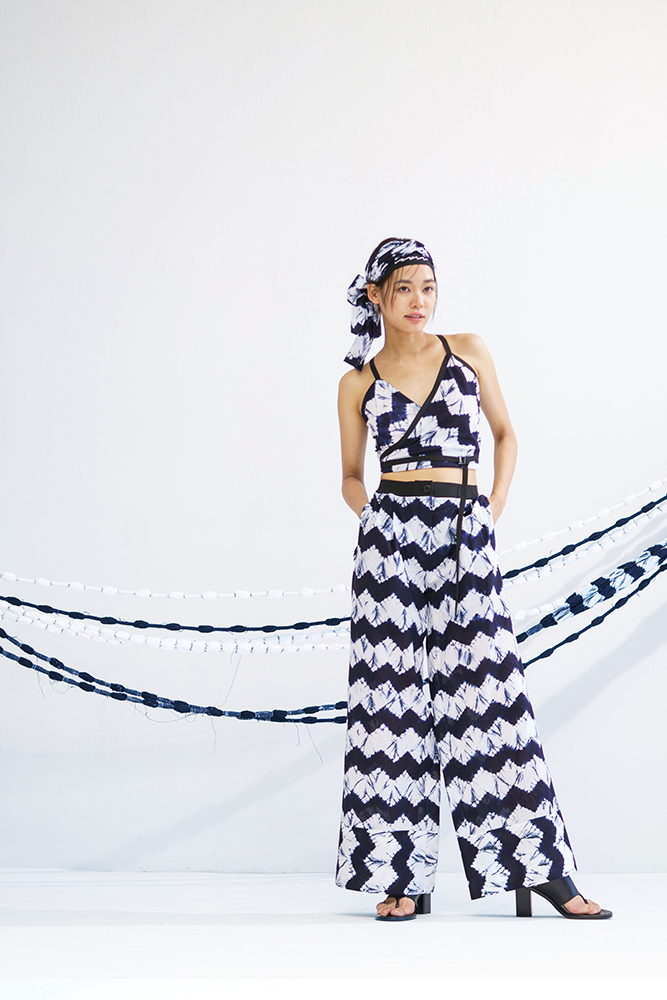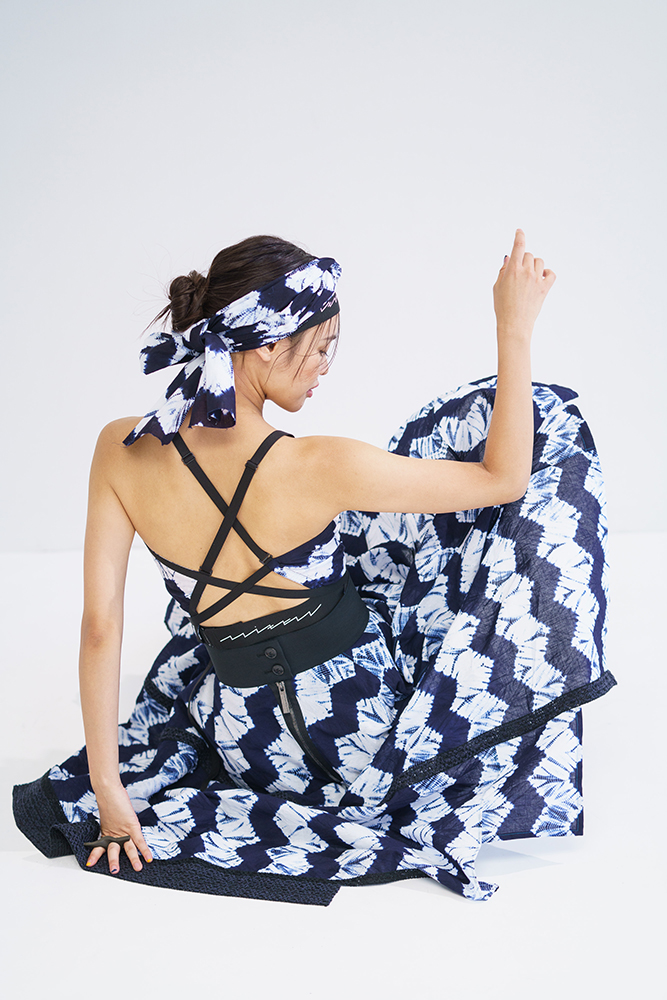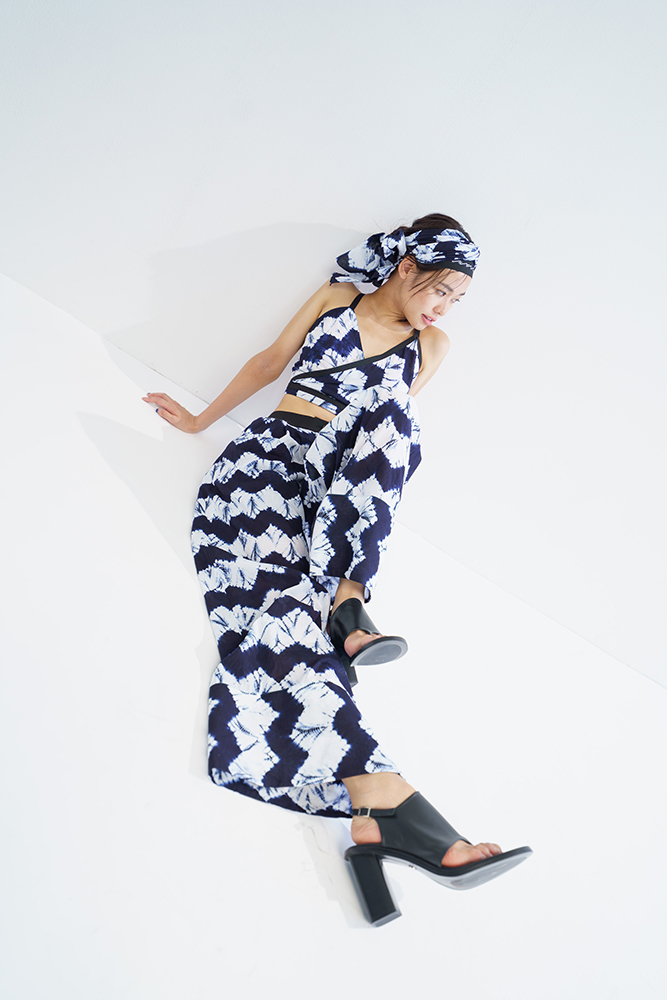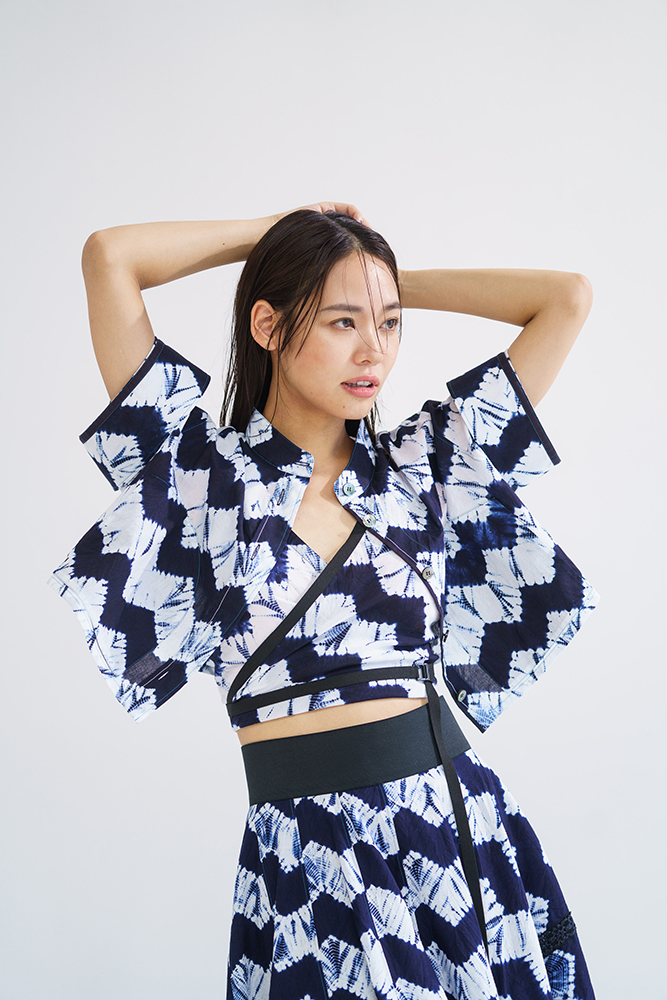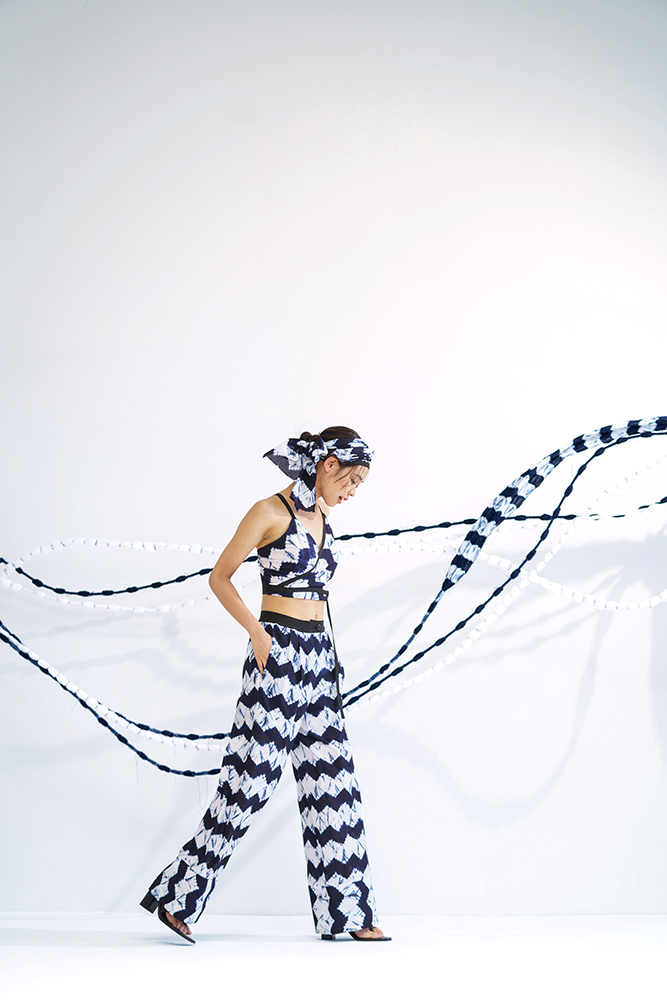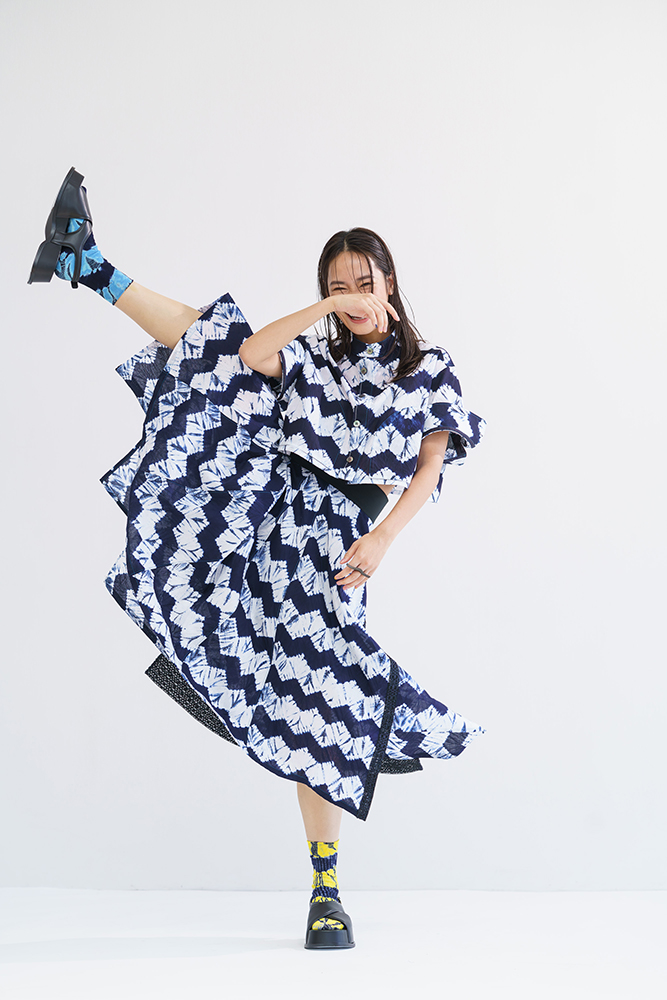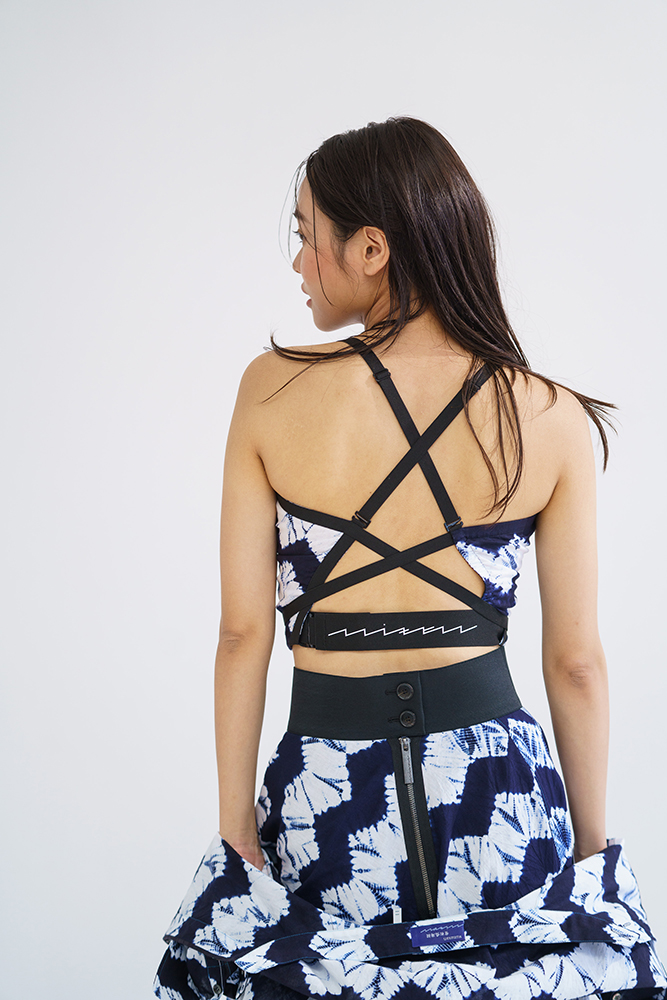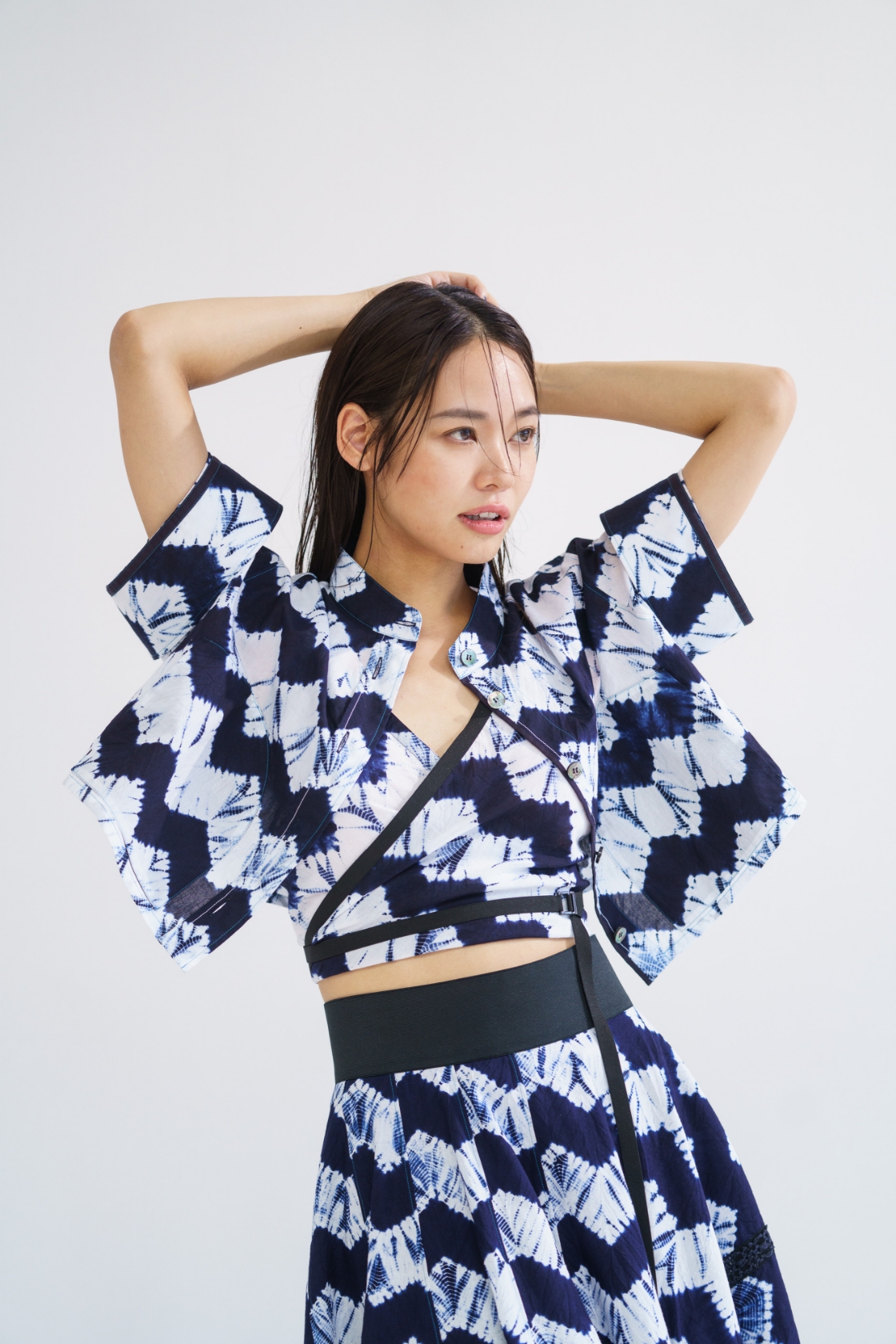ARIMATSU NARUMI SHIBORI
AICHI PREF.
‘SHIBORI’ Loved Around the World - The Contrast of White and Indigo
Arimatsu Shibori and Narumi Shibori (Arimatsu-Narumi Shibori), produced around the Nagoya City Green District in Aichi Prefecture,
are types of tie-dyeing known for their unique textures and patterns formed during the tying process.
During the Edo period, this region was a post station frequented by western feudal lords traveling to and from Edo for alternate attendance,
and under the patronage of the Owari Domain, it was granted exclusive rights for Shibori production.
Travelers purchased Shibori hand towels and yukata as souvenirs for their hometowns, making it the number one specialty of the highways.
The Shibori dyeing of the Arimatsu Narumi region boasts an overwhelming variety of over 100 types and is now loved worldwide as "SHIBORI".

Stencil Carving
In this step, markers are placed on the fabric according to the design to guide where the thread will be tied and the fabric twisted."
Holes measuring 2-3 millimeters are carefully punched into the stencil paper using an iron punch. Precision and accuracy are crucial at this stage.
Printing
The process of 'Printing' involves placing a stencil with holes onto white fabric and rubbing in a special dye that easily washes off with water.
This task requires careful control of pressure and efficiency, as any negligence in marking affects the subsequent tying process.
括り
The tying process involves isolating certain portions of the fabric
by tightly wrapping them with thread to prevent dye from penetrating.
There are many Shibori techniques that require intricate
and highly specialized skills. The process varies from technique to technique and is executed by professionals specialized in each method.
The type of thimble used can vary depending on the craftsman's personal style, making every piece unique and handcrafted.
Pleated Shibori
This Shibori technique, executed purely by hand, is influenced by the craftsman's expert touch.
The beauty—or inconsistency—of the pattern is dictated by the level of skill.
While there were over 100 Shibori techniques in the early Showa period, only around 70 remain today.
Nevertheless, there are many artisans who continue to excel in mastering a single technique."
Dyeing, Thread Removal
The dye is dissolved in a pot at 60-70 degrees Celsius. The fabric with finished Shibori processing is then dyed in this solution.
Utmost care is taken to prevent uneven coloring and to ensure the tying threads do not come loose. Afterward,
the fabric is washed three times in water and treated with a color fixative.
Since tie-dyeing involves tightly tying the threads to resist dyeing,
great care is taken to avoid damaging the fabric during thread removal. The method of removing the threads varies depending on the type of Shibori.
The fabric is intentionally not fully stretched out in order to preserve the characteristic textures of Shibori.

